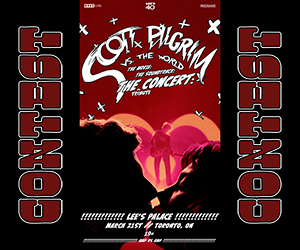HONESTY ISN’T ALWAYS PRETTY
A CONVERSATION WITH MEMPHIS MAY FIRE
Throughout their career, Memphis May Fire has consistently demonstrated an extraordinary ability to transform personal pain and struggles into profound sources of strength and resilience. Their latest album, Shapeshifter, encapsulates this remarkable journey, illustrating a veteran strength that stems from years of overcoming adversity. The term “shapeshifter” aptly reflects their evolution—not just in sound, but also in their artistic identity.
Since the band’s formation in 2006, Memphis May Fire has navigated the complexities of the music scene with remarkable agility, releasing seven studio albums that have captivated audiences. With their eighth studio release, they venture beyond simply experimenting with their sound; it signifies a deeper exploration of their own identities, both as artists and individuals.
Shapeshifter is a journey of introspection, showcasing the band’s growth and the wisdom they’ve gained through their experiences. Each track is a weighbridge for their willingness to embrace change and challenge themselves creatively. By delving into themes of vulnerability and self-discovery, Shapeshifter not only reaffirms Memphis May Fire’s and the now Anberlin’s lead vocalist Matty Mullins a place within the music landscape but also underscores the transformative power of art as a reflection of the human experience.
“I think you are spot on,” Matty Mullins smiles. “I think when weakness when talked about becomes a strength. It’s stain, isolation, or believing you have everything figured out that keeps you weak. And so, for me, I wanted to be really forthcoming about my own struggles, about the things I go through. Because I know from having lived enough life at this point that talking about the things you are dealing with is the first step to healing. Music is such a powerful tool. When we write songs about personal struggles, they become another person’s story, and they become the voice for someone who feels that nobody understands them. That’s the greatest gift we have. “Shapeshifter,” the song and single itself is very finger-pointy, and I think it will serve its own right. People will use this as maybe an empowering song for someone in their life who has hurt them, is manipulative, or shows a different face depending upon the group of people they are with. For me, the album title as a whole, really does turn the camera back around on me to look intrinsically. What masks am I wearing? Where am I not willing to be fully transparent and honest about myself, because I feel those things make me unlovable or unacceptable? What I want is to discover a new way to be fully transparent and still feel like I am a worthy person. I feel like this is something we can all strive towards. I hope the record does that for people.”
The album title, Shapeshifter, encapsulates a profound journey of self-discovery, exploring not only the intricacies of understanding oneself but also the complexities of empathy and the choices made by others. It highlights the transformative power of healing, suggesting that through personal growth, one opens up the possibility to experiment and embrace new experiences—many of which may have once seemed daunting or unattainable in earlier stages of the band’s career.
Memphis May Fire weaves a rich tapestry of diverse influences into the fabric of Shapeshifter, showcasing an attitude that feels both adventurous and bold. Each track reflects the band’s ability to navigate through various emotional landscapes and musical styles, resulting in a sound that is captivating, climatic, and multifaceted. This willingness to delve into different experiences evokes a sense of curiosity and exploration, inviting others to join in on a journey of growth and self-acceptance. Shapeshifter serves as an attestation to the power of resilience and the beauty of transformation through music, making it a compelling new addition to the band’s already successful discography.
“One of the coolest differences about this record was that this is the first album where I tracked my own vocals in full, start to finish. We still worked with our same producer, and Kellin [Quinn, musician and composer] mixed the record. As far as taking what we have written and putting it into existence, the actual recording and experimentation with my vocals, playing with different sounds, and exploring, was all done by myself, in my home studio. Which is really cool, because it is something I have wanted to do for a long time, but I always haven’t had the confidence to do it,” Mullins admits. “I didn’t know if I had the tools in my belt to do something like that, and to do it well. I just spent a lot of time investing in getting to the point where I felt comfortable doing that. I think that this did expand the creative process. It gave me the ability to put as much time and effort into every single take as I wanted to without hindering the time of a producer or maybe our time in a different city recording, and things like that. With how hard touring can be, it’s especially hard because you are gone from home for so long. To go do albums in another city, just adds another month or two months away from home. It’s just been a good thing all around for me.”
Shapeshifter presents a profound exploration of emotional complexity, weaving a rich tapestry of musical diversity. At its core, this album delves into themes of masks, regression, anger, pain, isolation, and depression. These toxic emotions steadily take hold of one’s internal state of being, ultimately transforming them into unrecognizable versions of themselves.
While the previous album, Remade In Misery, grappled intensely with the nature of pain, provoking existential doubts and questioning their reality, Shapeshifter shifts focus. It moves beyond mere questioning to an acceptance of these dark feelings, illustrating how they can metamorphose a person entirely. This transformation is not just a fleeting concept; it encapsulates a journey of recognition—a deep understanding of how despair can alter one’s identity and essence.
Through its twisted use of haunting melodies, gravid heavy elements, and poignant lyrics, Shapeshifter offers a narrative that is both personal and universal, allowing one to resonate with their own struggles and experiences. It invites them to confront the weight of these emotions head-on, ultimately revealing the powerful and sometimes troubling process of becoming something—or someone—new.
“I really think you are reading into it in all the right ways. It definitely is a progression. Not just of growth, but of learning,” says Mullins. “Of newfound information, skillsets, and dealing with my own mental health. Honestly there is so much power in that. I think the more and more I learn about my own mental health, the more I realize it all starts and blossoms with just being honest and just being okay with honesty not looking pretty. Especially with the rollout and the release of each single, every song has its own spotlight now in a really cool way, but we don’t want people to forget that it is a part of a large body of work, and so the ability to grab a piece of what we knew the whole picture would be with the album artwork, we knew what we wanted it to be and wanted to highlight certain sections of it as we released singles. We wanted to showcase what this shadowy figure and all the things they are dealing with, all these things that are crushing that person, as well as all the things that are teaching that person and the baggage this person carries. The destruction of that environment shows the wear that everyday life takes on somebody that is dealing with all of these things. When the album cover is finally revealed, it will show how all these individual pieces that were somewhat mysterious up until this point will all come together.”











